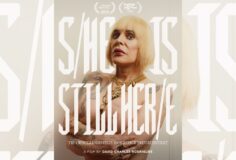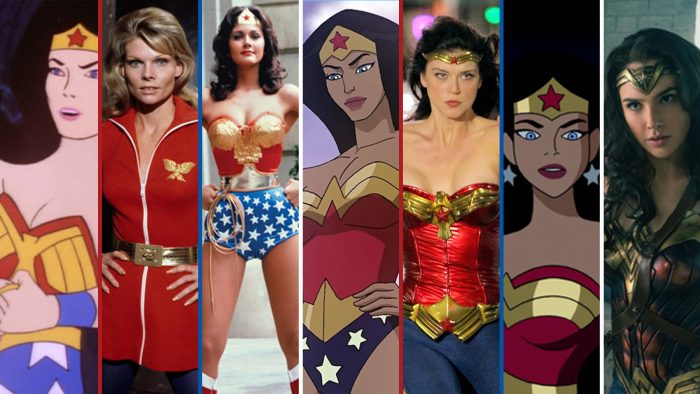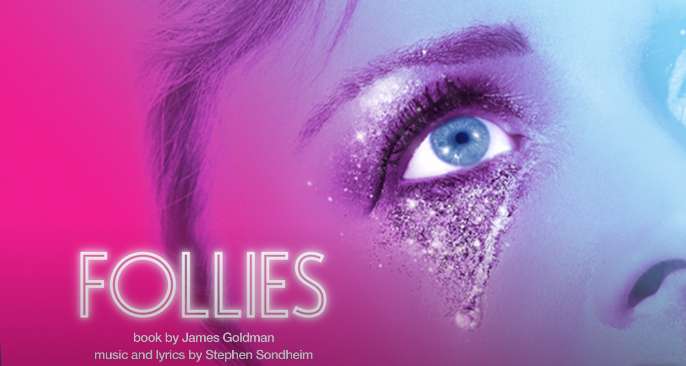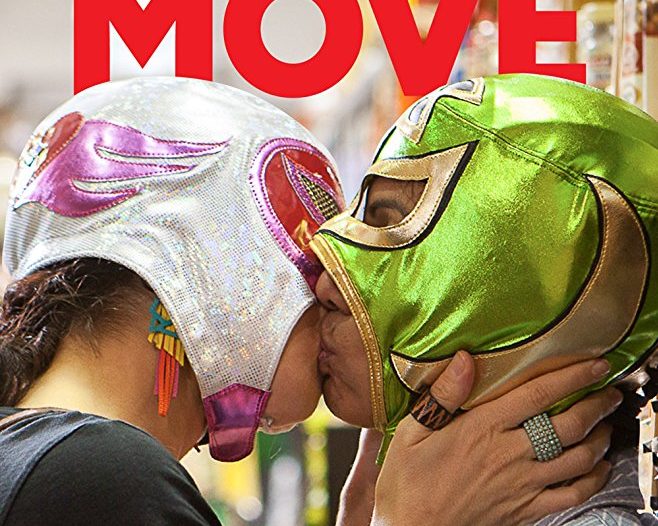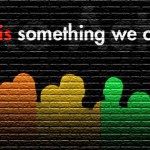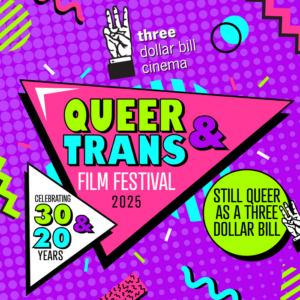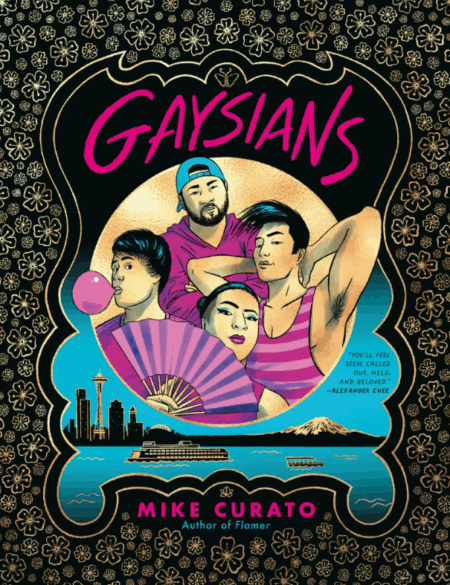Two new independent films open this weekend and both of them deal with unique relationships. One of them has ghosts, a female couple and was locally made…
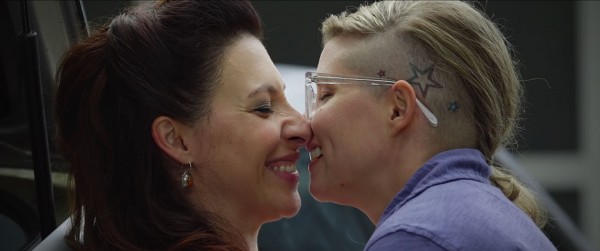
Angela DiMarco and Carollani Sandberg star in the locally made ghostly romance, “Brides To Be” which has its World Premiere this Friday, June 17th at SIFF Cinema Egyptian as part of the “Twist of Pride Film Festival”.
Brides To Be is the new film from Kris and Lindy Boustedt, shot in an “actual haunted mansion in Marymoor Park, Redmond.” Viva local cinema, Seattleites. And I’ll say right up front that it’s good, perhaps even great. TL;DR: Go see it in a cinema with a bunch of strangers. This one deserves your money and time.
Jenna can’t write her wedding vows. She doubts her value as a partner. Her titular bride-to-be is Robin, a woman who seems doubt-free. They are utterly in love. You’ll know this from all the kissing. Soon they will be married. Their doughnut-delivering friend Nate accompanies them to a remote mansion, the site of their upcoming wedding. Nothing is in order as it should be. In fact, a creeping sense of disorder advances as trouble ensues. “This is what the night before weddings feels like,” Nate says. “It’s a little tense. And every once in a while you giggle and then cry.” He might as well be describing the experience of watching the film itself.
Brides To Be is a film of echoes and repeating motifs. Crumpled balls of notebook pages in one scene become crumpled balls of napkins in another. Stars appear tattooed on heads, dangling from ears as earrings and, of course, twinkling above in the night sky. Door handles are featured prominantly here and there before significant moments. Echoes of past (and future?) speech buzz on haunted telephones. The genders of the nuptual couple echo each other, as do the genders of the two male characters, who are, perhaps, distorted echoes of each other in some way.
In this echo-chamber context, even innocuous repetitions seem to carry additional or increased significance — witness the strings of sparkling light bulbs in the background, for example, or an otherwise unremarkable stack of folding chairs at the edge of a frame. It’s smart to situate echo at the core of a ghost story like this. After all, what is a ghost but an echo of what once was, and will be? Not that Brides To Be is strictly a ghost story. It refuses to tell us exactly what is the source of trouble; or, more accurately, it embraces several possibilities, allowing conflict to emerge from multiple sources. Again, smart.
This notion of repetition is woven into the themes of Brides To Be as well. “If a creepy thing happens,” says friend Nate to a frightened Jenna, “and it’s just once, and there is no repeatable pattern, then it’s just our minds playing tricks on us.” Here the horror goes meta. Film is a repeatable pattern, in that it can be watched repeatedly. Being repeatable, is it something more than “just our minds playing tricks on us?” Are its horrors phantom or real? Watch accordingly. Be afraid.
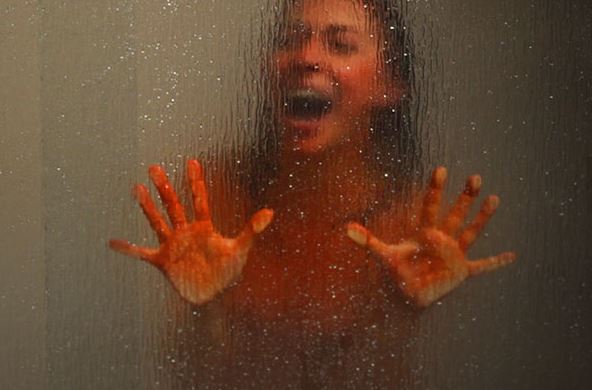
Angela DiMarco stars in the locally made “Brides To Be” debuting at the “Twist of Pride Film Festival” this Friday, June 17, 2016.
Or just sit back and enjoy this particular ride, with its artful allusions to films that no doubt informed it: Psycho, The Shining, Alien. Carrie. This is the kind of economical, smart, Hitchcockian film that M. Night Shyamalan wishes he could make, with a tight script, four characters, a couple of locations, and no bullshit. Every element belongs, is necessary, and delights even as it unsettles. Yes, some measure of camp is present, but the right kind in the right amount for the genre.
The Boustedts and Co. made the most of whatever indie-film constraints they worked under. The lighting is understated, beautiful, and tone-appropriate. Sound is used perfectly to reinforce mood and increase tension. What you can hear might kill you: Flies buzzing beyond the top of the stairs. A hint of rainstorm outside, compressing the space inside. An urgent whispering from rooms that are supposed to be empty. The disturbing, twisting crack and pop of bodies writhing in pain under some sort of supernatural, subcutaneous torture. And the music is empathetic, not dictatorial, feeling with us rather than at us — a real achievement.
You might enjoy, too, the lyrically / tastefully shot, soft-core, same-sex make-out sequences in bedrooms, showers, and half-decorated wedding-reception rooms; or how the filmmakers contrast those make-out scenes with intense, disturbing, psycho-supernatural breakdowns. Fight-and-Fuck relationships are the stuff of cinema gold, and this one offers a nice twist, fueled as it is by suppressed anxieties and the inscrutible machinations of an angry house. While many brides-to-be might question whether or not their love is real, these brides-to-be are confronted with whether or not reality itself is real. Good enough reason to wonder if your wedding should in fact take place, yes?
As Rocky Horror became a cult-classic template for late-night, interactive cinema outings, so should Brides To Be become a go-to template for a new wave of horror-themed weddings. Invite your friends to a mansion. Freak them out with creepy noises, uncomfortable temperatures, insane mood shifts. See who survives, or sticks around, to hear the vows, if anyone. Your wedding, like Brides To Be itself, will be unforgettable.
Final assessment: If weddings were this interesting and intense in real life, I would happily attend more of them. Will Jenna finish writing her vows? Will she survive to read them? Will Robin survive to hear them? Will Nate survive to deliver more doughnuts and reassuring pep-talks? You’ll have to attend to find out. No RSVP required.
Brides To Be’s World Premiere is on Friday, June 17th at the Twist of Pride Film Festival at the SIFF Cinema Egyptian. Showtime is 10 PM. Directors Lindy and Kris Boustedt will be there, and several of the actors are expected to attend. Go HERE to buy tickets.
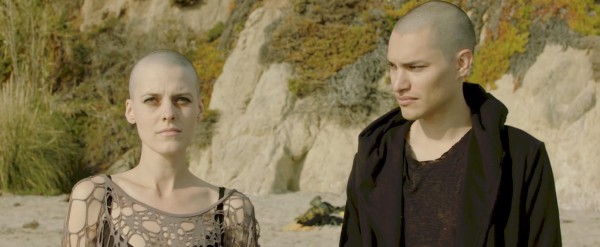
Adriana Mather and Zach Villa star in “Honeyglue” opening at Seattle’s Film Center (at Seattle Center) on June 17, 2016.
Honeyglue is a new film by writer/director James Bird that also mixes glamor, love, and horror, but in a very different way than does Brides To Be. Where self-doubt is the cancer that eats away at The Brides, here literal cancer is also the figurative cancer that attacks love. Its horrors are less conceptual, less escapable. What do you do when mortality itself renders the end of your love an absolute certainty?
But this film is not joyless. It is a gender-playful descendant of Harold and Maude that looks at love through a set of scenes that are variously funny, painful, poetic, or philosophical. While it is about snatching the last crumbs of life from the closing jaws of death, it is never treacly or overly-sentimental. Well, maybe just a little. But Honeyglue is definitely not your step-mom’s Step-mom.
Jordan is an art-school dropout in crisis, living on a rooftop, destitute but glamorous and creative. Morgan, meanwhile, is dying from cancer. Together they make tragic magic. As a pitch, it sounds downright awful. We’ve seen these end-of-life genre pictures before, and not all of them have been easy to stomach. Honeyglue is one of the good ones, though you may have to consciously open yourself to it if, like me, you tend toward cold-hearted cynicism as a viewer. If you let them, Jordan and Morgan will break through to your soft feely bits without coming off as too precious or precocious.
“Am I ruining your honeymoon by being a critically conditioned wife?” Asks Morgan, vomiting into an ocean side resort toilet.
Jordan, holding her wig back safely away from the vomit, responds, “I think most mornings after the wedding the bride is gripping the toilet.”
They are easily more endearing than annoying. More world-real than Real World.
This is a message movie, but the filmmakers wisely hide that message in the mostly-authentic behavior of mostly-authentic characters. “Mostly-authentic” isn’t entirely fair. Honeyglue tries hard to achieve emotional honesty and accuracy, and generally achieves heightened versions of them via an earnest script and convincing, sometimes powerful, performances. This is, however, more romantic dreamscape than gritty reality, with its animated sequences and sometimes odd plot points. But yes, the message is very much present, just as it is any love letter. Even, and especially, in the face of death, even against the certain oblivion promised to us by a cold universe and the incontrovertible, unstoppable progression of time, love is real.
“I wish we had more time,” says Morgan.
“To hell with time,” responds Jordan. “It’s not real anyway. What’s real is you and me, right here. You’re my fantasy,” he continues, looking suddenly into the camera, breaking the fourth wall for a moment, staring at us viewers in our darkened cinema, before returning his exotic, cat-like gaze to his dying, fictive lover, and finishing, “which makes you my reality. You’re my realistic fantasy.”
“And you’re my fantastic reality,” Morgan smirks, inverting and deflating his philosophical, romantic pretension a bit, then replacing it with the kind of sharp directive that only the dying can make truly real: “Fuck time.”
Honeyglue smartly acknowledges that time will always fuck you, no matter how hard you try to fuck it. But it also asserts that you can win that contest, in some small way, through art, where representational forms survive as long as the media that holds them. Like Harold and Maude before them, and Romeo and Juliet before them, and Antony and Cleopatra before them, Morgan and Jordan will live as long as we have the ability, and interest, to tell, and watch, their story. The same is true for every “real life” friend and lover that we have lost or will ever lose in real life. This film’s titular honeyglue can be thought of, therefore, as the medium that records the living of a life, and facilitates a remembering. It is the stuff of transcendence; the lube one uses to successfully fuck time as it fucks you.
So go to the cinema, and fuck time with Morgan and Jordan. You won’t regret it.
Honeyglue opens June 17th at SIFF Film Center, with Writer/Director James Bird, Producer/Actress Adriana Mather, and Producer/Composer Anya Remizova scheduled to be in attendance opening night. Go HERE to buy advance tickets.



